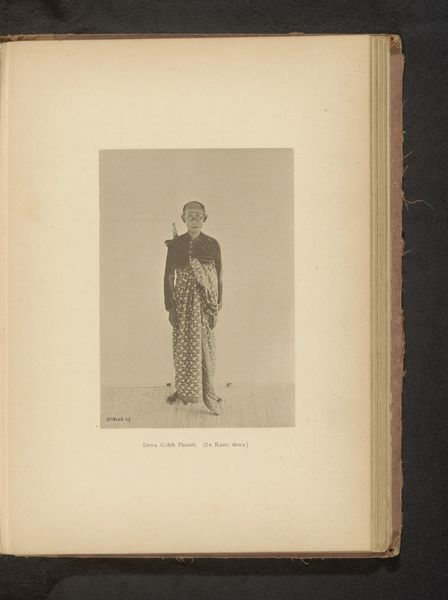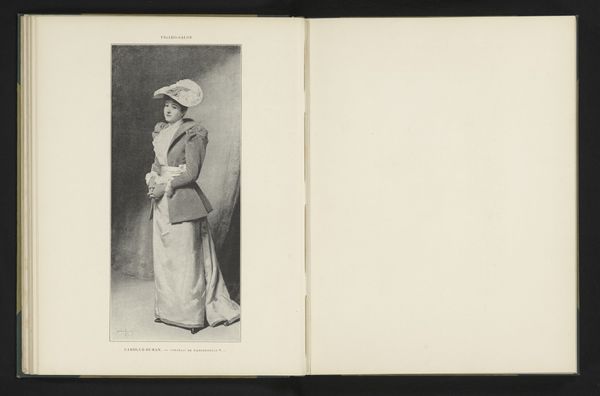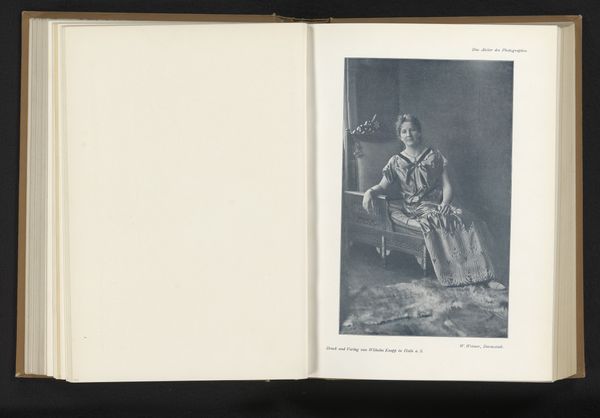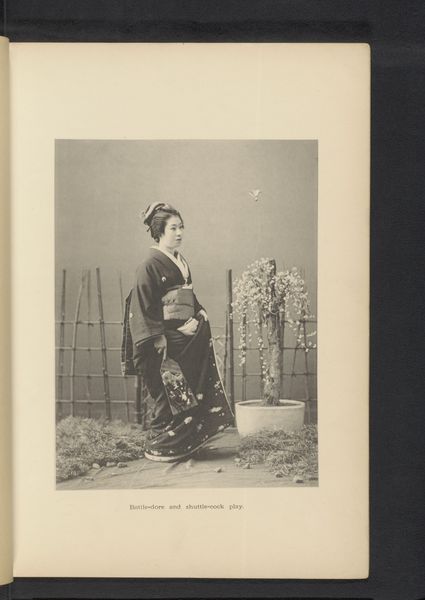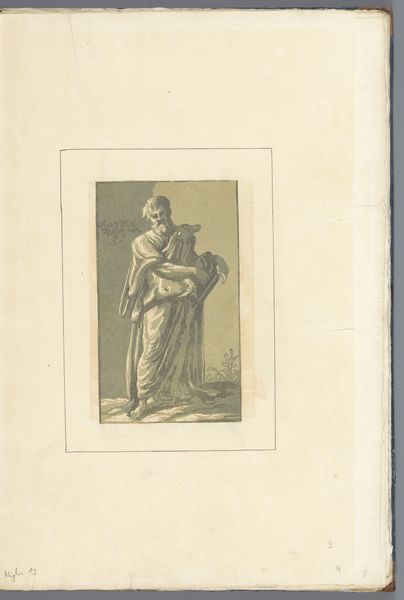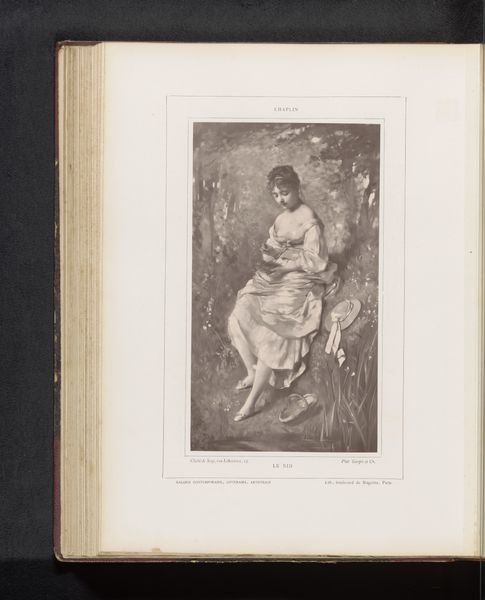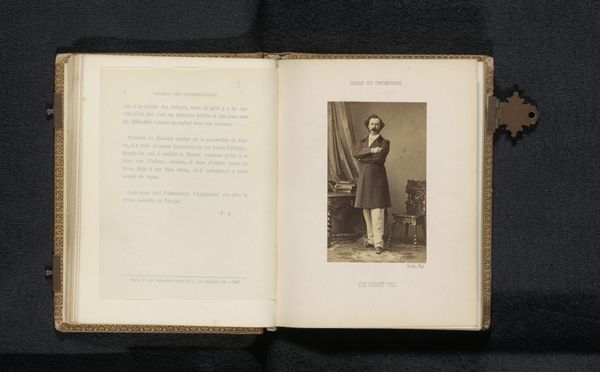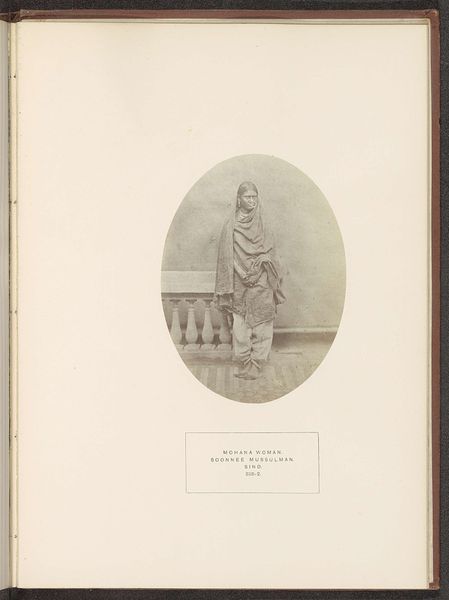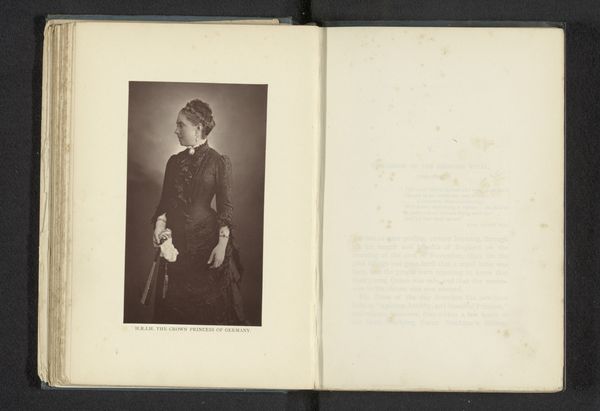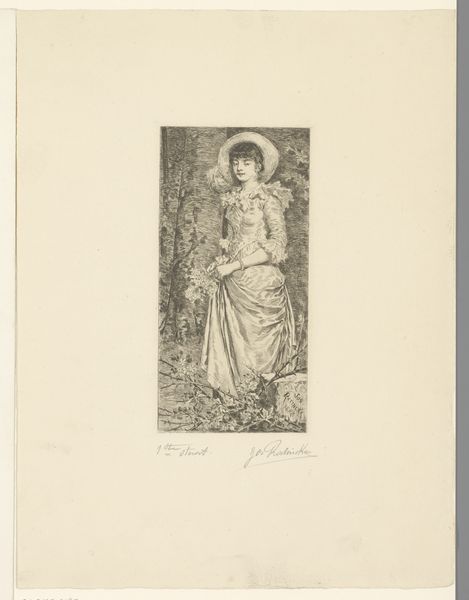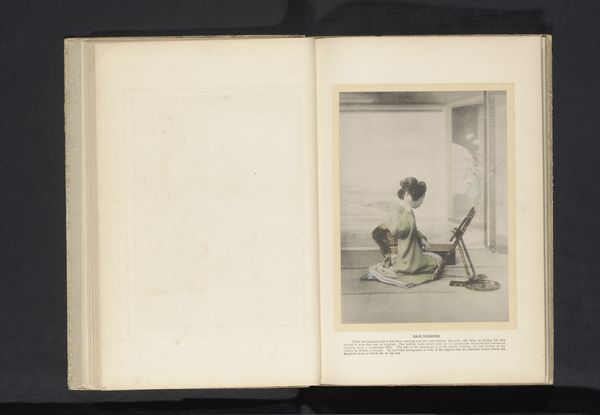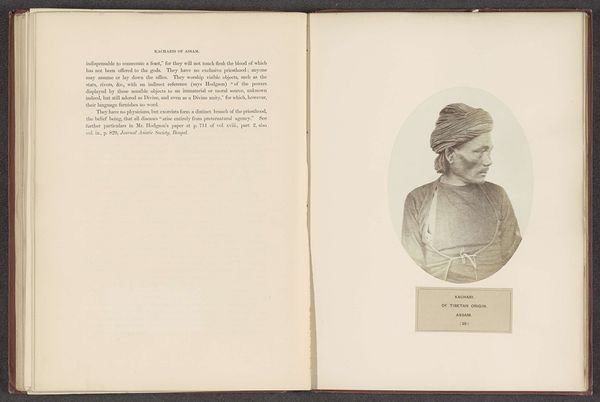
photography
#
portrait
#
african-art
#
photography
Dimensions: height 117 mm, width 167 mm
Copyright: Rijks Museum: Open Domain
Curator: Before us, we have a photograph, entitled "Portret van een onbekende vrouw," or "Portrait of an Unknown Woman" if you will. It dates from before 1897, and the photographer is Christiaan Johan Neeb. Editor: The subdued sepia tones give it a pensive, almost melancholy quality. The subject stands frontally, allowing for direct engagement. But what textures are at play? Curator: Indeed, that somber hue, inherent in early photographic processes, lends gravity to the image. I would say that the lines formed by her dress, or garment, create a visual pathway drawing our eye to the young woman's face and emphasizing the ethnographic intent of the portrait, rather than any inherent intimacy. The play of light and shadow is particularly interesting in the draping. Editor: Agreed. You notice the drape and its folds: the material used appears lightweight and intricately patterned, perhaps indicative of local craft. I'm struck by what these patterns could reveal about the region and available skills involved in cloth production at that time. This is obviously pre-synthetic dye. What was being used? How labor-intensive was the overall crafting of the fabric? Curator: That's an insightful material analysis. Regarding semiotics, the formal pose, along with the photographic medium itself, creates a visual document indicative of its historical moment: colonialism and exoticism. What does it signal for the audience of the period? Editor: Precisely. Furthermore, the production context is pivotal. The photograph being bound into an album or volume suggests a specific form of consumption and documentation during a colonial era. These objects functioned as material markers of power. Who controlled access? What are the implications? Curator: Very astute points, indeed. Editor: To conclude, this photograph offers insights into early studio practice, ethnographic representation, and material culture. I think its textures call out for the socio-political narrative woven throughout. Curator: I agree; thinking of composition and light, along with the gaze of the subject, we may discover insights beyond its surface appearance and open questions about colonialism and our reading.
Comments
No comments
Be the first to comment and join the conversation on the ultimate creative platform.
